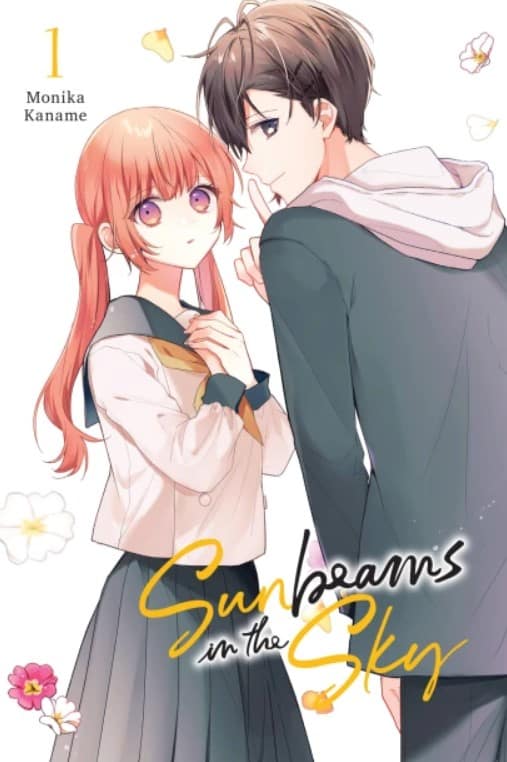“Himari Akeno can't wait to start high school! Even though she's parting ways with her twin sister, Mio, Himari's enthusiasm to start this new chapter of her life is palpable—that is, until a traumatic incident sends her home to hide in her room…Watching Himari's dreams shatter is more than Mio can bear, especially when her sister still longs for an ordinary student life. Determined to see her twin get back out into the world, Mio “catches a cold” and convinces her sister to fill in until she “recovers.” As long as the shy, introverted Himari can pull off impersonating the bubbly, energetic Mio, nothing could go wrong…right?” (Yen Press)
A relatively straightforward teenage rom-com, “Sunbeams in the Sky” offers little in the way of originality–even introducing a cultural fair segment in its inaugural volume. Still, sticking to the tried and true formula, particularly when it comes to tales of teenage romance, is not always a deterrent if the story and visuals are executed with skill.
Thankfully, Monika Kaname's work is a wonderfully written piece of light-comedic romance that stays consistently engaging, offering an idealistic balance of humor, drama, and emotions. Moreover, the twist of identical twins taking turns at school is focused on the human element and foregoes lazy comedy that could easily be exploited for laughs. The tone of the book is relaxed, yet there are serious elements and drama to keep readers engaged. Furthermore, the romantic interest, Makoto, is the perfect prince, oozing wholesomeness and kindness, making him the ideal complement to Mio who is overcoming her anxiety. Overall, the cast is well-rounded and each has their own quirks that make them endearing.

As sharp as the writing is, the story opens with an extreme instance of abuse that could off-put readers if they don't push past the initial shock. The opening pages introduce the idea of Mio being assaulted, and this attack acts as the main catalyst for her withdrawal from society. This choice, frustratingly, adds little to the volume beyond giving a reason for isolation and the mental effect this event would have on a young teenager feels rather minimized in the following chapters. This instance could prove to be better integrated into the series later, but looking at the volume by itself, it is grotesque and unnecessary. This is, undeniably, a hurdle readers will need to get over, though I would argue it is worth doing so as after a few chapters the instance becomes inconsequential once the story hits its stride.

Visually, Monika Kaname injects an abundance of personality into each of her characters, making each highly expressive. Furthermore, the light comedic elements of the story are well-timed, with the visuals giving an overall charming aesthetic that works perfectly for the genre. The background work, however, is barren and there is a lack of panels that will give readers a moment to pause and admire the art. Still, Monika Kaname's visual direction thrives in this genre, and its emphasis on character development is perfectly realized.
To get a better idea of the visuals, Monika Kaname has a site that is well-presented and highlights her work. You can check it out here.
Despite an off-putting intro that starts the series on a questionable note, “Sunbeams in the Sky” is a competent shojo that should appeal to fans of the category. Its (mostly) relaxed tone and charismatic characters make the series ideal for casual reading and could prove to be one of those titles ideal to read between other series for a quick dose of wholesome goodness. Ultimately, the first volume will leave people wanting to know what happens between Mio and Makoto and that is reason enough to stick around.
















